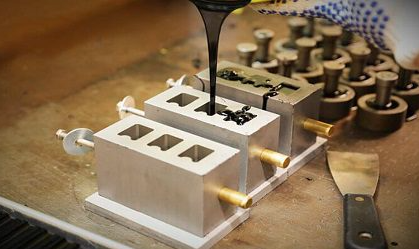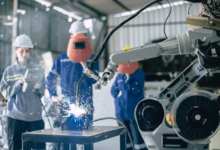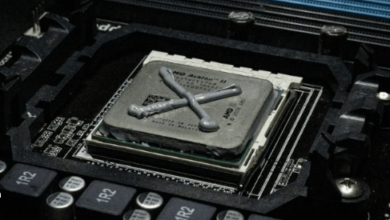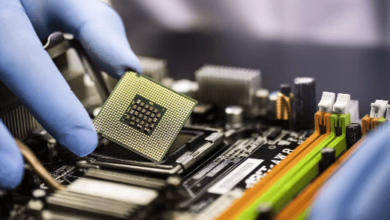The Comprehensive Guide to Urethane Casting

Introduction
Urethane casting is a highly adaptable manufacturing technique that employs polyurethane resins to create durable, high-quality parts and prototypes. This method stands out due to its cost-effectiveness, precision, and versatility, making it a popular choice for a range of applications from prototyping to low-volume production. This article provides an in-depth exploration of urethane casting, including its process, benefits, challenges, applications, and future trends.
What is Urethane Casting?
Urethane casting involves using liquid polyurethane resin to produce parts and components by pouring the resin into a mold, where it is allowed to cure. This technique is valued for its ability to create intricate details and complex geometries, which might be challenging to achieve with other methods. Urethane casting is commonly used in industries such as automotive, aerospace, consumer goods, and more, due to its ability to produce high-quality and customizable parts.
The Urethane Casting Process
1. Design and Mold Preparation
Design
The urethane casting process begins with the creation of a detailed design for the part or component. This design is typically developed using Computer-Aided Design (CAD) software, which allows for precise modeling of the part’s geometry and features. The CAD model serves as the basis for creating the mold, which must accurately reflect the design specifications.
Mold Fabrication
The next step involves creating the mold based on the CAD design. Molds for urethane casting are commonly made from silicone or metal. Silicone molds are often used for prototypes and low-volume production due to their lower cost and ease of fabrication. Metal molds, typically made from aluminum or steel, are used for higher-volume production runs due to their durability and ability to produce more precise parts.
2. Resin Mixing
Components
Urethane casting utilizes two main components: the polyurethane resin and a hardener or catalyst. The resin and hardener are mixed in specific ratios to initiate the curing process. The exact formulation of the resin can be adjusted to achieve different material properties, such as flexibility, hardness, or impact resistance.
Mixing Process
Accurate mixing of the resin and hardener is crucial for ensuring the quality of the final part. The mixing process must be done thoroughly to avoid issues such as inconsistent curing or defects in the part. Some urethane casting machines are equipped with automated mixing systems to enhance accuracy and consistency.
3. Pouring
Pouring Techniques
Once mixed, the urethane resin is poured into the prepared mold. Depending on the complexity of the part and the capabilities of the casting machine, the pouring can be done manually or using automated systems. Automated pouring systems help ensure uniform filling of the mold and reduce the risk of air bubbles or other defects.
Degassing
To remove trapped air bubbles, the mixed resin may be subjected to a vacuum process known as degassing. This step is important for achieving a smooth and defect-free surface on the final part. Some urethane casting machines include degassing chambers to streamline this process.
4. Curing
Curing Process
After pouring, the resin-filled mold is placed in a curing environment where it is allowed to set and harden. The curing process can take place at room temperature or in a heated curing chamber, depending on the specific resin formulation. The curing time required varies based on the size of the part and the properties of the resin used.
Curing Time
The duration of the curing process is an essential factor in determining the overall production time. Proper curing ensures that the resin achieves the desired mechanical properties and dimensional accuracy. Incomplete or uneven curing can lead to defects such as warping or weak spots in the final part.
5. Demolding
Removal
After curing, the part is carefully removed from the mold. This step must be performed with care to avoid damaging the part or the mold. Automated demolding systems can improve efficiency and consistency by using mechanisms to eject parts without manual intervention.
Finishing
Once demolded, the part may undergo additional finishing processes, such as trimming, sanding, or painting, to meet final specifications. These finishing steps help achieve the desired appearance and functionality of the part.
Read also: Empowering Small Businesses with the Monport Metal Engraving Machine
Advantages of Urethane Casting
Versatility
Urethane casting is known for its versatility, making it suitable for a wide range of applications. It can be used to create parts with varying geometries, sizes, and material properties. The flexibility in resin formulations allows for customization to meet specific performance requirements.
Cost-Effectiveness
Compared to other manufacturing methods, such as injection molding or metal casting, urethane casting offers a cost-effective solution, especially for low to medium production volumes. The lower cost of mold fabrication and the ability to quickly produce parts make it an attractive option for prototyping and small-batch production.
Speed
The Urethane casting process is relatively fast, enabling rapid turnaround times for prototypes and production runs. The quick curing times and efficient mold fabrication contribute to shorter lead times, allowing for faster development and iteration of new products.
Precision
Urethane casting machines and techniques offer high precision, resulting in parts with accurate dimensions and intricate details. This precision is essential for applications requiring tight tolerances and complex features.
Customization
The ability to modify urethane resin formulations allows for the production of parts with tailored properties. This customization includes variations in hardness, flexibility, impact resistance, and other characteristics, making urethane casting suitable for diverse applications.
Conclusion
Urethane casting is a versatile and effective manufacturing method that offers numerous benefits, including flexibility, cost-effectiveness, and precision. By understanding the urethane casting process, its applications, and emerging trends, manufacturers can make informed decisions about the best approach for their production needs.
Despite its advantages, urethane casting presents certain challenges and limitations, such as durability and environmental considerations. However, ongoing advancements in resin technology, digital integration, and sustainable practices are addressing these issues and expanding the possibilities of urethane casting.
As the industry evolves, urethane casting will continue to play a significant role in producing high-quality parts and prototypes. By staying abreast of the latest developments and trends, manufacturers can leverage urethane casting to drive innovation and achieve excellence in their products.





